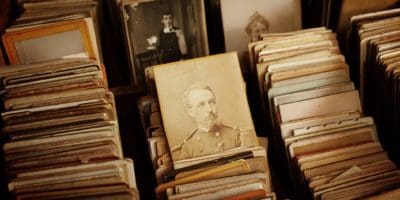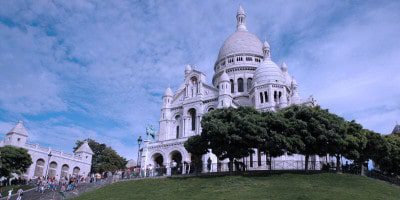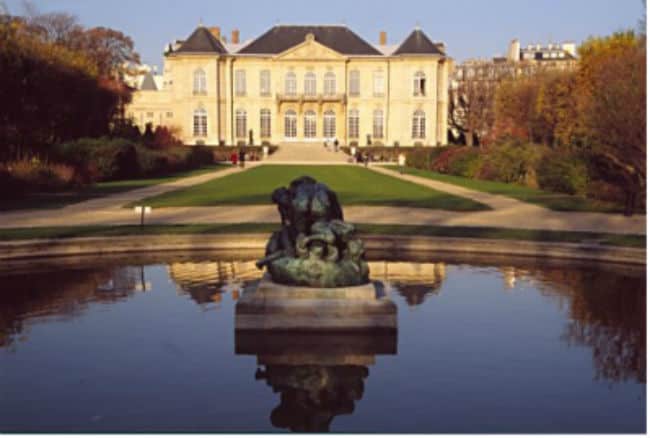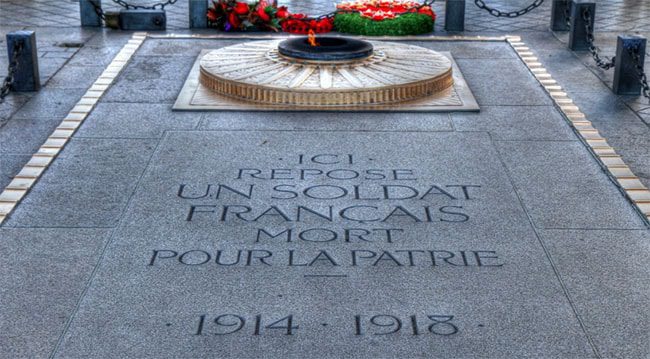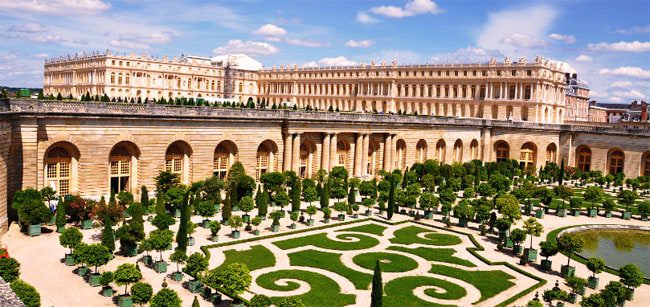If you arrive in Paris coming from Australia, you might not want to lose contact and keep in touch with your country of origin. Let’s make a point: Australian art and history in Paris is not very strong. The explanation is simple: the two countries don’t really share any common history, and the relations between them are not numerous. But you can still find several places and events in Paris that were elaborated by or for Australia. Here are the main ones.
ART
Australian art has an important place in Paris’ cultural landscape. Here are several places where you can admire it.
The Musée du Quai Branly
The Musée du Quai Branly, created in 2006, is dedicated to the world’s indigenous – understood in the sense “non-occidental” – arts and cultures. Today, a great part of the museum is dedicated to contemporary aboriginal art. First, because it has an major collection of aboriginal art from Australia. Secondly, because it organizes exhibitions on the theme – for instance, an exhibition in 2012 on the birth of this art in the middle of the Australian desert in the seventies.
Finally, because the museum received indeed a major contribution from the Australian government: a few years ago, it commissioned eight Australian Indigenous artists to create a permanent installation of modern aboriginal works. This masterpiece is exposed on the roof of one of the main buildings of the museum: you can only see it from the Eiffel Tower or from Google Maps. So this museum really is one very important mark of the Australian art and history in Paris.
Musée du Quai Branly
Address: 37 Quai Branly, 75007 Paris
Phone number: 01 56 61 70 00
How to go there: you can take the metro with line 9 (station named Alma-Marceau or Iéna), line 8 (station named Ecole Militaire) or with line 6 (station named Bir Hakeim).
The Musée Rodin
The Musée Rodin is also a place of the Australian art and history in Paris. It is a museum dedicated to the works of the famous sculptor Rodin. One of his most appreciated models was an Australian lady named Marianna Russell. She was the wife of the Australian painter John Russell. Rodin admired her classical beauty and made a few portraits of her between 1888 and 1889.
He then used her face in many other artworks, mostly portraits. She was sometimes represented as Minerva, sometimes as Pallas, or even as Bacchus, wearing helmets, long hairs or vine leaves. The Australian model was loved by the painters of her time, and modelled for many people, such as the French impressionist painter Renoir.
Musée Rodin
Address: 79 Rue de Varenne, 75007 Paris
Phone number: 01 44 18 61 10
How to go there: you can take the metro with the line 13 (station named Varenne), the line 8 (station named La Tour Maubourg)
Place des Pyramides
On the Place des Pyramides (“square of the pyramids”), you can find an equestrian statue made by the French sculptor Emmanuel Fremiet. It represents Joan of Arc, wearing an armour, riding a horse and waving a banner, with the face of the Australian model Marianna Russell. The statue is supposed to be located near the place where Joan would have been wounded when failing to capture the city of Paris. The statue was commissioned by the French government after the defeat of the war against Prussia in 1870, as a symbol for the “reconquest”.
Place des Pyramides
Address: Place des Pyramides, 75001 Paris
How to go there: you can take the metro with the line 1 (station named Tuileries) or with the lines 7 and 14 (station named Pyramides).
The Musée d’Orsay
The Orsay Museum is dedicated to the period 1848-1914, which means that it covers all impressionism and post-impressionism. The collection hosts many paintings by Australian impressionists. For instance, the museum possesses the largest public collection of works of Australian impressionist painter John Peter Russell. If French impressionism has only marginally influenced the Australian movement, it has still influenced very significantly the Australian painters of the 19th century.
For instance, the Australian artistic movement named the Heidelberg School, that happened from 1883 to 1897, was inspired by the French en plein air et direct painting practices. Thus, the Musée d’Orsay hosts some paintings of those plein air painters, such as Frederick McCubbin or Jane Sutherland. The collection is really a great wy to discover or to remind Australian art and history in Paris.
Musée d’Orsay
Address: 1 rue de la Légion d’Honneur, 75007 Paris
Phone number: 01 40 49 48 14
How to go there: you can take the metro with the line 12 (station named Solférino) or you can also take the RER with the line C (station named Musée d’Orsay).
The Australian Embassy
The Embassy for Australia in Paris is also a great engine of the promotion of Australian art and history in Paris. Firstly, administers the Australia-France Foundation. This foundation promotes cultural exchanges between the two countries; for instance, it publishes a newsletter called “L’Australie en France” that promotes Australian activities in Paris and in France. Secondly, the Embassy itself also hosts some events, such as exhibits, concerts, meetings, conferences or other Australian events, all linked to Australia and its culture.
Australian Embassy in France
Address: 4 rue Jean Rey, 75015 Paris
Phone number: 01 40 59 33 06
How to get there: you can take the metro with line 6 (station named Bir Hakeim).
HISTORY
In Paris you can also find historical links to Australia.
The Tomb of the Unknown Solider
Australia is the country that lost the more men on the French soil during the world wars: it lost 45 000 men. During WWI in particular, many Australian soldiers fought in the French capital. One of the main Australian delegation was led by William “Billy” Hughes; among his soldiers were some well-known men, as Sir Joseph Cook, vice premier of Australia, and Sir Robert Garran, the Solicitor-General.
But whether they became afterwards famous or not, all those brave Australian men, as the ones of all nationalities, deserve to be honoured for their courage during the war in France and in Paris. Thus, the tomb of the Unknown Soldier located under the Arc de Triomphe, which symbolizes all the soldiers killed during WWI, all represents the Australian ones who sacrificed their lives for ours.
The Tomb of the Unknown Soldier
Address: Place Charles de Gaulle, 75008 Paris
How to get there: you can take the metro with the lines 1, 2 or 6 (station named Charles de Gaulle-Etoile); you can also take the RER with the line A (station named Charles-de-Gaulle-Etoile).
The Versailles palace
If Australia has no formal date of independence from the United Kingdom, the first world war contributed to forge Australian national identity. After the war, there was a debate between Australia, represented by William “Billy” Hughes, and the UK, represented by Wilson, about the annexation of the enemy’s colonies. It was solved by the creation of the “mandates” for countries such as Australia: they had the right to control some territories, such as those colonies, but they also had to report on their administration to the new league, named the Commonwealth.
The independent mandate started to act officially on its behalf, and the first international text that it officially signed was the Versailles peace treaty. It was signed in the Versailles palace, in the Galerie des Glaces. Thus the treaty embodies the new independent Australia, participating on its own to international diplomacy, and this happened in the capital of France, on 28th July 1919, just next to Paris. The Galerie des Glaces is then a very symbolic place in Australian art and history in Paris.
Versailles Palace
Address: Place d’Armes, 78000 Versailles
How to get there: you can take the RER with line C (station named Versailles Château Rive Gauche).
So whether you are an Australian exiled in the city of lights, or a Parisian who want to discover the Australian art and history in Paris, you now know that this culture exists and is represented in Paris, and accessible to all.
Planning a trip to Paris ? Get ready !
These are Amazon’s best-selling travel products that you may need for coming to Paris.
Bookstore
- The best travel book : Rick Steves – Paris 2023 – Learn more here
- Fodor’s Paris 2024 – Learn more here
Travel Gear
- Venture Pal Lightweight Backpack – Learn more here
- Samsonite Winfield 2 28″ Luggage – Learn more here
- Swig Savvy’s Stainless Steel Insulated Water Bottle – Learn more here
Check Amazon’s best-seller list for the most popular travel accessories. We sometimes read this list just to find out what new travel products people are buying.



